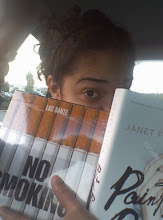Saul Bass: Design is Thinking Made Visual

Saul Bass was a pioneer and ground breaking designer and director. Bass broke into American cinema and changed Hollywood tradition forever. With a style unmatched and so fresh, Bass rose as a designing genius. He redefined film’s visual language with jagged-print objects and use of broken type, liberating many designers to come. His work was daring, constructed with bold, confident lines and simple images, recalling Soviet commercial design of the ‘20s while adding an American twist.
Born in the Bronx in 1920, Bass studied at the Art Students League in New York and Brooklyn College under Gyorgy Kepes; who introduced him to the Bauhaus style and Russian Constructivism that his later titles highly favored. His work could be summarized by his motto of “symbolize and summarize”, always carefully choosing single silhouetted images to quickly set the tone of the films he worked on.





He became visual consultant for Hollywood’s greatest, from the likes of Alfred Hitchcock, Otto Preminger, and Martin Scorsese. Some of his most noted credits include: The Man with the Golden Arm, The Seven Year Itch, Vertigo, North by Northwest, Anatomy of a Murder, Exodus, Psycho, Ocean’s Eleven, Spartacus, Cape Fear, Goodfellas, and West Side Story. Bass soon became the undisputed master of film title design, turning neglected titles into integral parts of the film. He turned movie titles into art forms, with The Man with the Golden Arm being one of his most acclaimed pieces.
Bass was also recognized for his logo design. He was responsible for some of the most iconic and remembered logos in North America, which include: Bell, AT&T, Exxon, Continental Airlines, United Way, Avery International, Kleenex, Lawry’s, Girl Scouts of USA, United Airlines, and Quaker Oats.

A quote describing the importance of titles:
"My initial thoughts about what a title can do was to set mood and the prime underlying core of the film's story, to express the story in some metaphorical way. I saw the title as a way of conditioning the audience, so that when the film actually began, viewers would already have an emotional resonance with it."
Bass’ work would go on to inspire many who would adapt if not replicate his iconic style into their own works. Some of the most famous adaptations include Spike Lee’s Clockers and Florence Deygas and Olivier Kuntzel’s titles for Catch Me If You Can.
These imitations serve as a tribute to a one of our greatest American designers.
By the end of his life, Saul Bass created over 50 title sequences for Preminger, Hitchcock, Kubrick, Frankenheimer, and Scorsese.
He died in 1996 at the age of 75, leaving a prolific career spanning over 40 years.

No comments:
Post a Comment